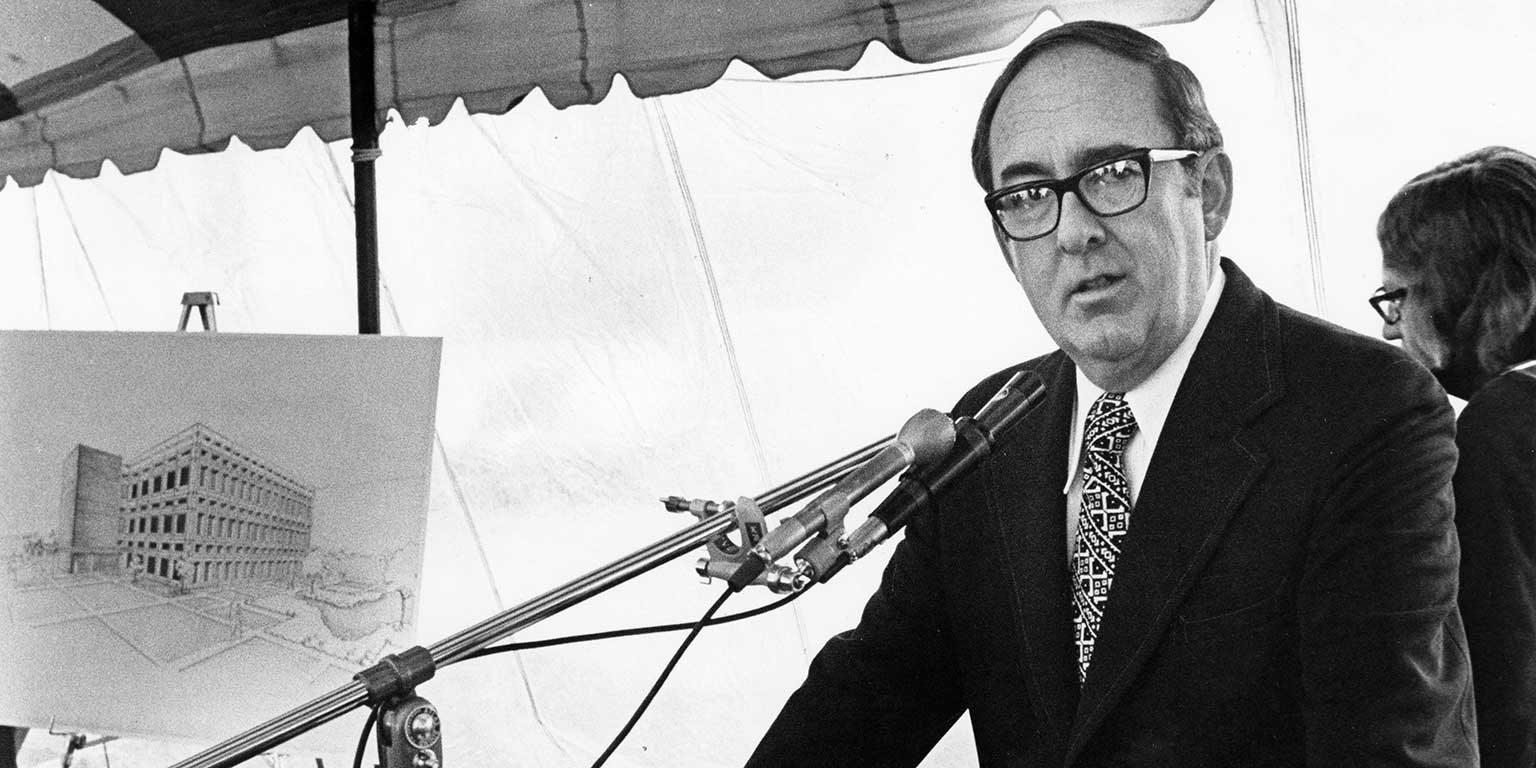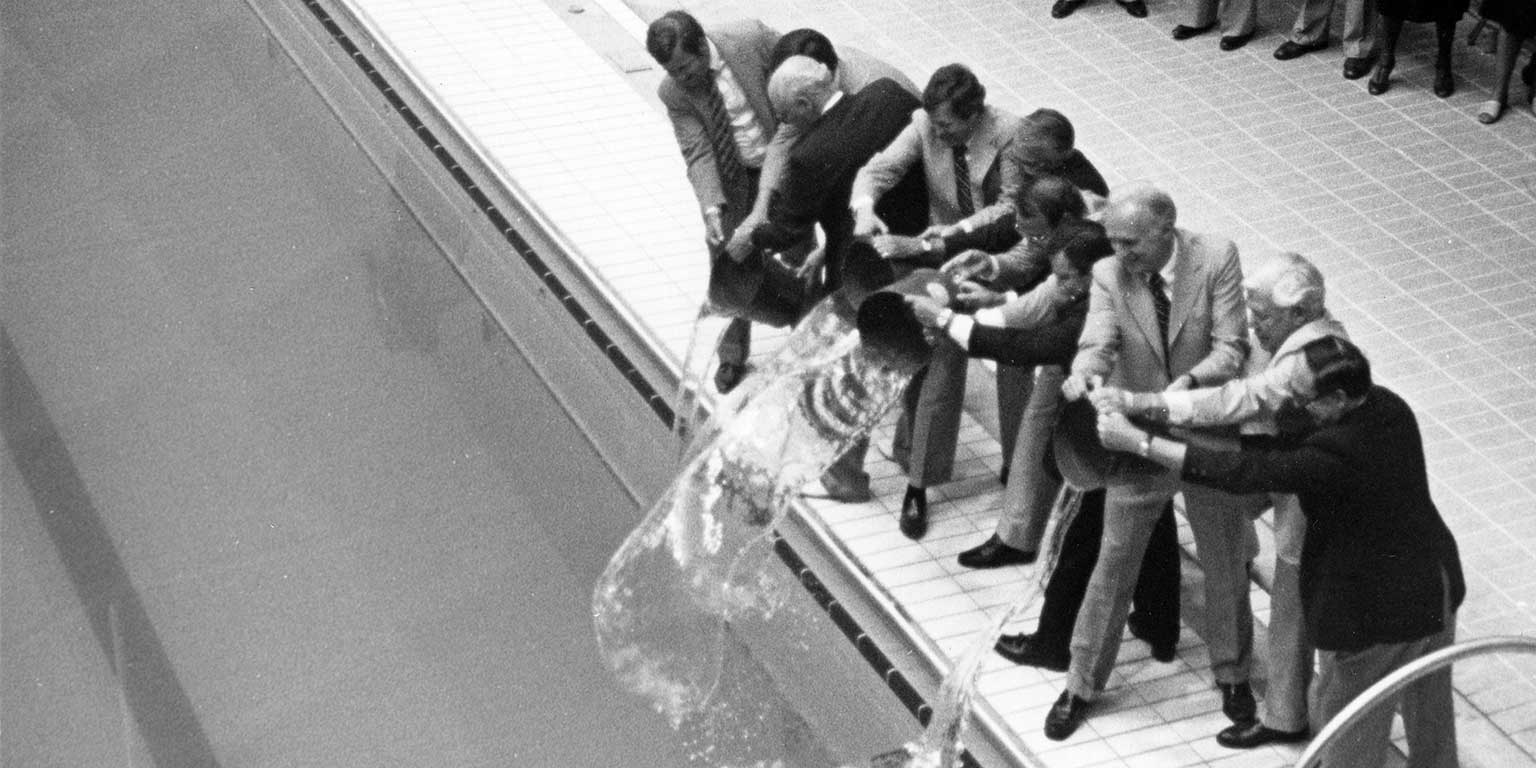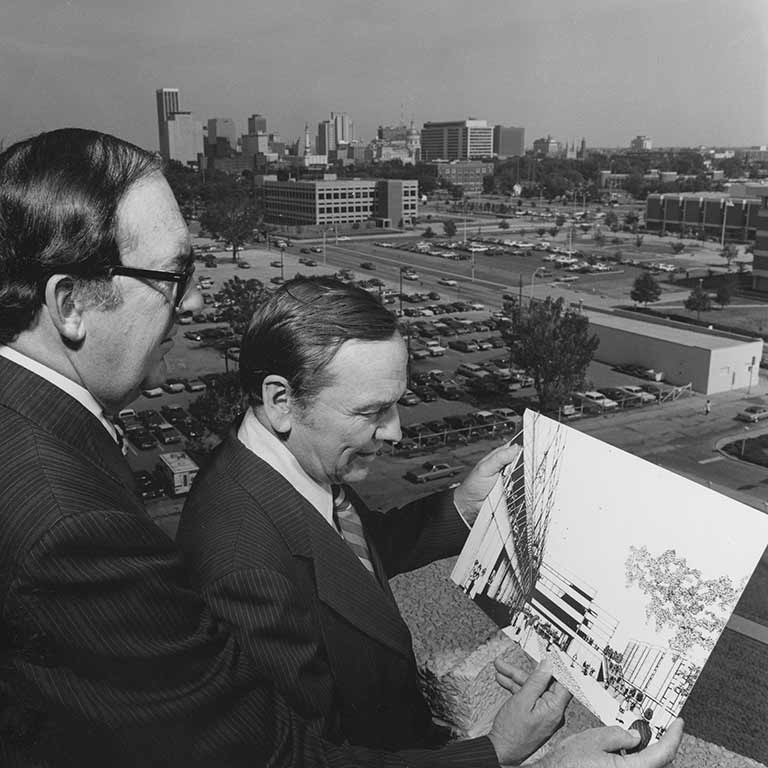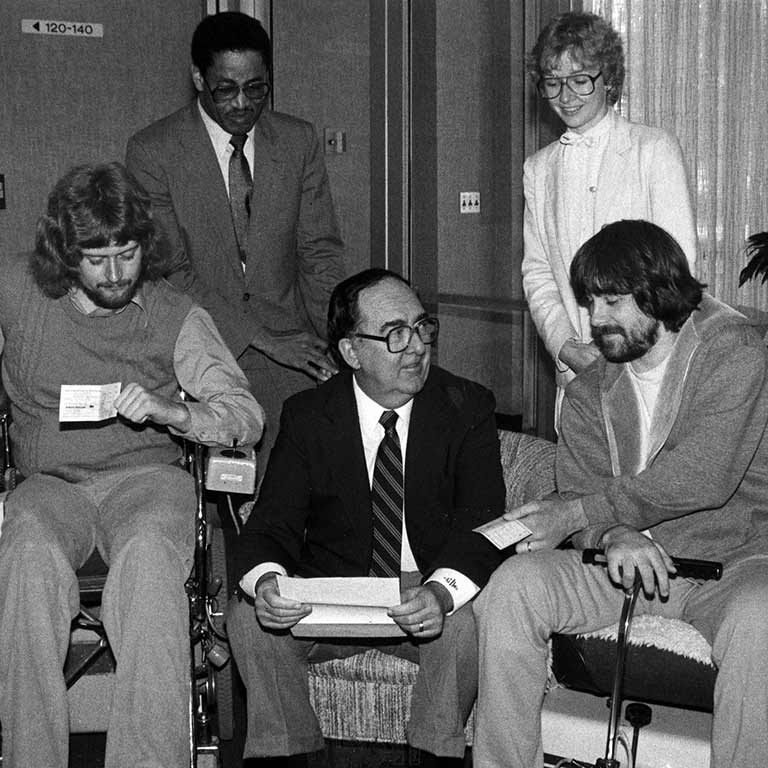Dr. Glenn W. Irwin, Jr. was appointed IUPUI's second chancellor in 1973, but his connection to Indiana University dates back much farther. Revered and respected for his kindhearted nature, Dr. Irwin's lasting impact on IUPUI cannot be overstated. Dr. Irwin graduated from the School of Medicine in the spring of 1944, one of two wartime classes that year, the result of the school's push to produce more doctors to serve the injured troops.
After an internship at Methodist Hospital and a partial residency at the IU Medical Center, he served in the U.S. Army Medical Corps before returning to finish his residency at the IU Medical Center. Dr. Irwin joined the School of Medicine's faculty in 1950 and became its dean in 1965. Four years later, he was present when the Indianapolis extensions of Indiana University and Purdue University merged to become IUPUI.
During his deanship, Dr. Irwin's focus on medical education resulted in the development of the "Indiana Plan" in the 1960s, the first comprehensive medical education program of its kind. The "Indiana Plan" established seven additional campuses where the first two years of medical education were taught in collaboration with the science faculty. In an effort to address physician shortages in underserved areas and to serve our aging population, the School of Medicine expanded the statewide system created by Dr. Irwin in 2012 by adding third- and fourth-year options to those campuses.
Under Dr. Irwin's leadership as chancellor, IUPUI experienced a dramatic physical transformation and significant growth in every aspect of the university. Enrollment grew 35% to more than 23,000 students; full-time faculty increased from about 800 to more than 1,300; sponsored research increased from $21 million to nearly $41 million; and $200 million in new construction was completed, including the Business/School of Public and Environmental Affairs building, the School of Law building, the iconic IU Natatorium and what is now the Michael Carroll Track and Soccer Stadium. Riley Hospital for Children and IU Hospital were each expanded, and both the Regenstrief Institute and the Ronald McDonald House were opened.







